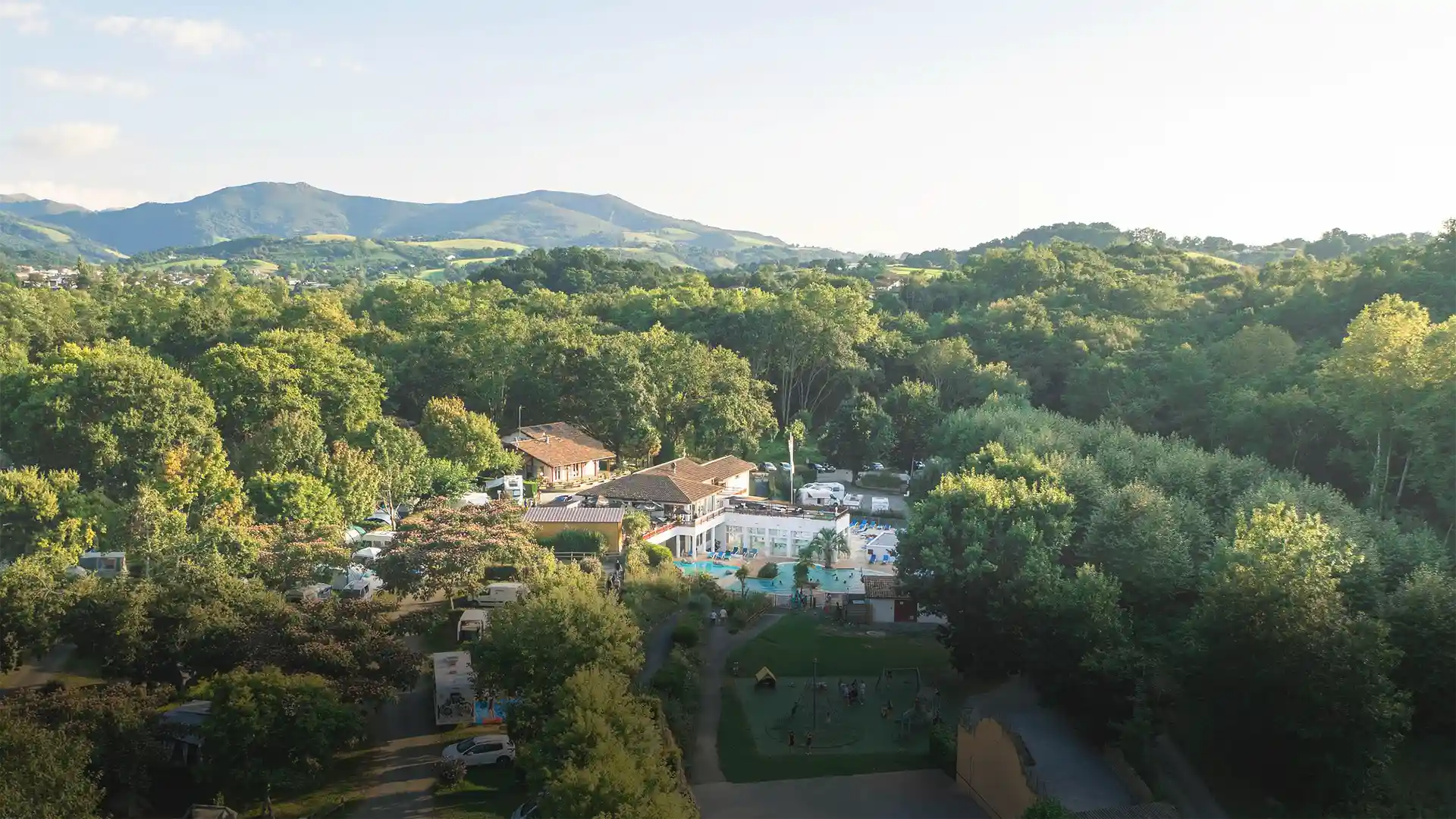Ascain, a Basque village at the foot of La Rhune: visit, history, culture and tradition
Just 7 km from Saint-Jean-de-Luz, at the foot of La Rhune, Ascain is a typical Basque inland village. Nestling on the banks of the River Nivelle, this leafy village has retained its typical Labourdin character: a large square with an old church, a 17th-century town hall, a lively pediment and half-timbered houses. What to do, what to see, what to visit in Ascain, here are the not-to-be-missed highlights of your camping holiday in the Basque Country.

The pediment square
À Ascain, as elsewhere in the Basque CountryThe Place du Fronton is the beating heart of the village, a place to meet, chat and enjoy a drink on the terrace, play pelota. Take advantage of the designer’s market and summer events, especially during the festivities of theAscain in August.
Today vibrant and welcoming, this traditional square was nevertheless the scene of some very violent historical scenes in the early 17th century. In those days, the Rhune mountain inspired a real sense of dread in the local population. It was supposed to be a place of the Sabbath, where nocturnal assemblies of witches and other “diableries” were held. The case went all the way back to King Henri IV, who appointed two magistrates from the Bordeaux parliament to lead a witch-hunt. Dozens of Sorginak (“spellmakers” in Basque) were executed in the village square. Even Ascain ‘s own priest was sent to the stake.
The Roman bridge at Ascain
The bridge over the Nivelle, known as the “Roman Bridge”, dates from the 15th century. Roman in name only. Until the 19th century, it was the only passageway into the village. The pleasant setting is ideal for relaxing, picnicking and fishing. The forty-meter-long structure, with its three unequal arches, is a listed monument. It occupied an important strategic position during the retreat of Napoleon’s armies in 1813, and one of the arches was destroyed to prevent the Duke of Wellington‘s artillery from passing through. For Napoleonic history buffs, the Bizkarzun redoubt and theEsnaur redoubt, which controls access to the Saint-Ignace pass , are part of the La Rhune massif fortifications designed by Marshal Soult along the crest of the Pyrenees.
The “Maison du Fou
Near the Roman bridge, you can see the house of Ferdinand Pinney Earle, a famous Hollywood film decorator of the 1920s. Settling in Ascain, he had this astonishing house built , inspired by the pueblos of New Mexico, in the shape of a revolver! The inhabitants ofAscain have christened it the “Maison du Fou” (Eroen Etxea in Basque). Many celebrities from the early 20th century stayed here, including Charlie Chaplin, Josephine Baker and Marlene Dietrich.
Ascain church
Magnificent, like many churches in the Basque Country! The original church, dedicated to Notre-Dame de l’Assomption, was built in the 14th century, rebuilt in the 17th and inaugurated in 1626 under Louis XIII. Ascain ‘s massive church tower is reminiscent of the square keeps of the Middle Ages. Inside, the church boasts three tiers of carved wooden galleries dating from the 16th century. A superb Baroque altarpiece is surrounded by statues of the Virgin Mary, St. Joseph and St. John, topped by a dove. As for the astonishing model ship hanging in the nave, it’s an ex-voto reminder of the village’s port and maritime past, renowned for its shipyards. The floor is covered with large slabs of Rhune stone, some of which bear funerary inscriptions. Enjoy a Basque-language mass or one of the many Basque choral concerts.
La Rhune, a mythical peak to discover from Ascain
Nestled at the foot of the Basque mountains, Ascain is the starting point for hikers on the Rhune, one of the most emblematic walks in the Basque Country. The hike starts from the Carrières parking lot in Ascain, near the motocross course. The trail is fairly wide, with a vertical drop of around 760 m. Distance: 10 km. Allow around 2h30 for the ascent and 2h for the descent.
photo©F.Perrot


